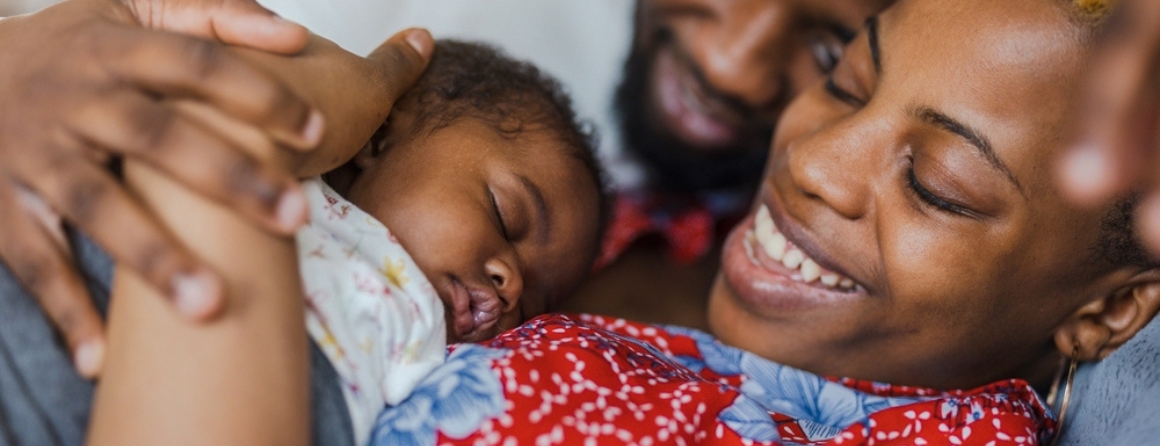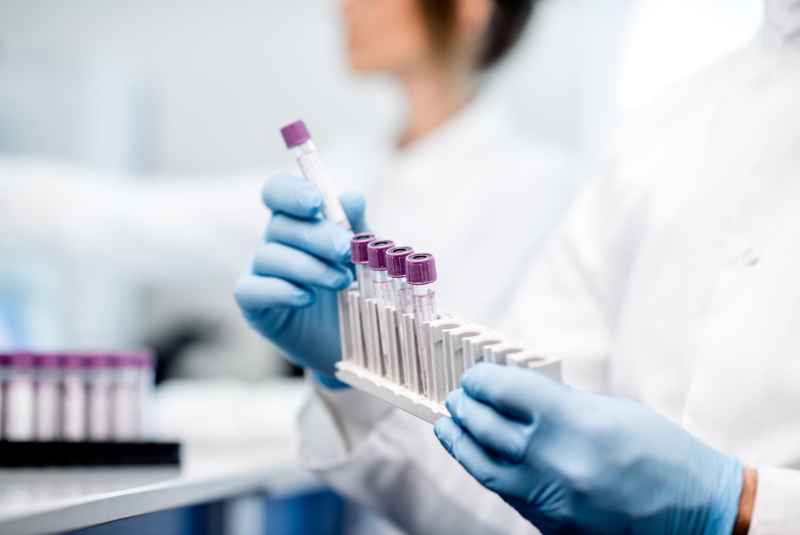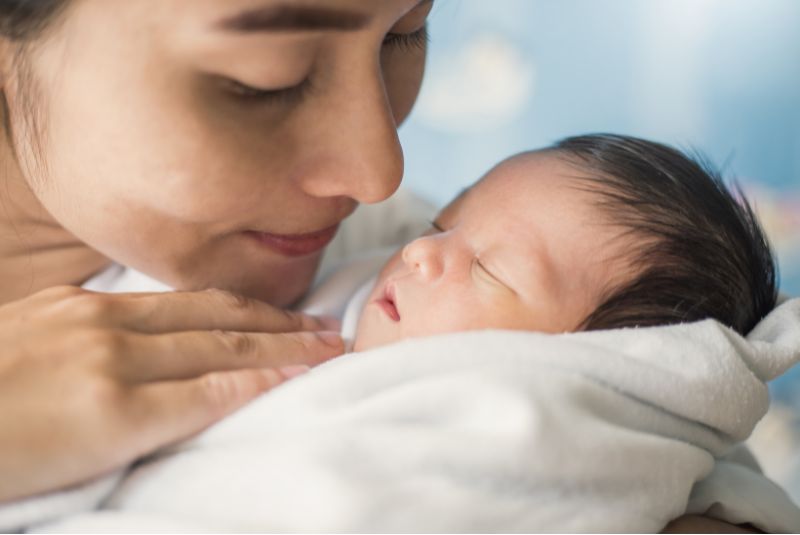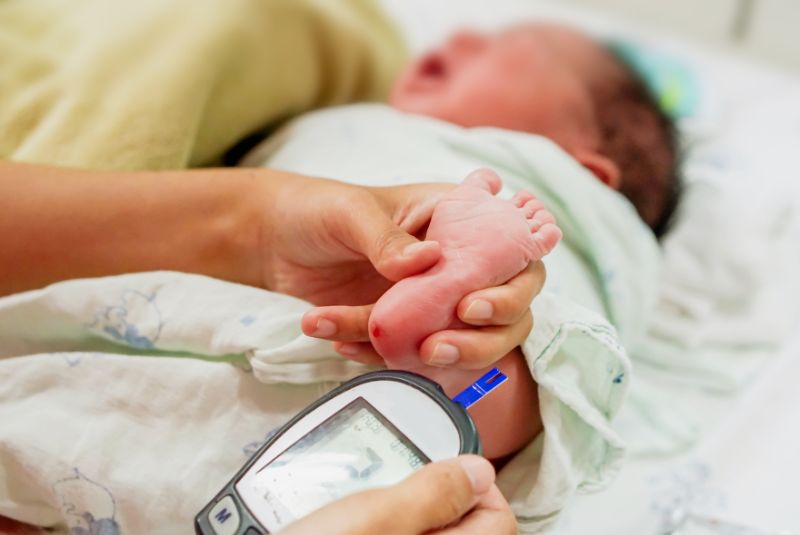Epi-Genomic Newborn screening (EpiGNs) program
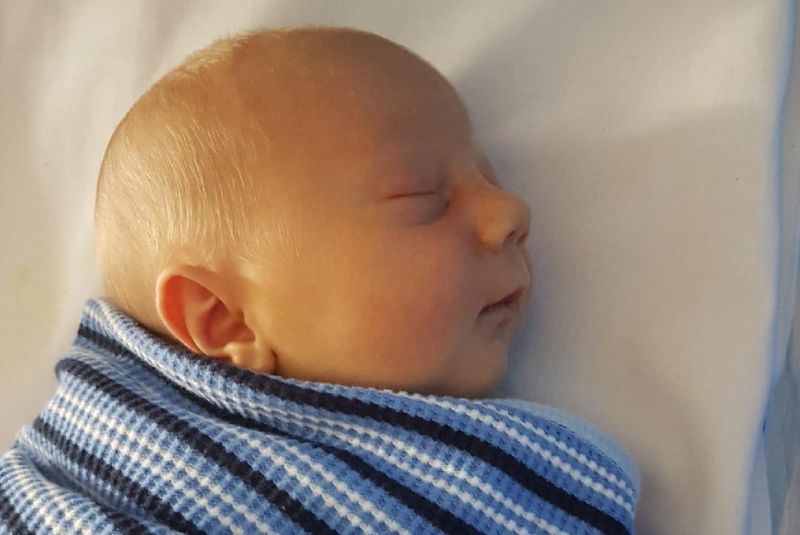
A new program to improve health outcomes for babies and their families using a heel prick test.
Murdoch Children’s Research Institute, in partnership with GenV, the University of Melbourne, University of Adelaide, University of Technology Sydney, Hunter Genetics and Monash University, will oversee the Epi-Genomic Newborn screening (EpiGNs) program from 2022 to 2027.
Murdoch Children’s Research Institute, in partnership with GenV, the University of Melbourne, University of Adelaide, University of Technology Sydney, Hunter Genetics and Monash University, will oversee the Epi-Genomic Newborn screening (EpiGNs)...
Murdoch Children’s Research Institute, in partnership with GenV, the University of Melbourne, University of Adelaide, University of Technology Sydney, Hunter Genetics and Monash University, will oversee the Epi-Genomic Newborn screening (EpiGNs) program from 2022 to 2027.
EpiGNs will examine if conditions linked to intellectual disability, autism, severe obesity and seizures can be identified as part of the heel prick test performed in the first year of life of 100,000 Victorian infants.
Detecting these conditions from birth can lead to life-altering effective treatment and care pathways, which are not possible without early diagnosis.
In addition to the conditions currently detectable by the heel prick test in newborns, such as cystic fibrosis and hypothyroidism, the EpiGNs program will use a new approach to identify changes in the activity of genes. This will help us to detect developmental conditions including Fragile X, Prader Willi, Angelman, Dup15q, Turner, XXY, XXXY and XXYY syndromes.
Except for Prader Willi syndrome, most conditions don’t typically show physical signs at birth. That means early detection can prevent delayed diagnosis, lower medical expenses, and reduce stress and anxiety for families.
Finding Fragile X syndrome early is also crucial. It not only helps the affected infants by providing early access to treatments but also their mothers, who will be at high risk of having more affected pregnancies before the first newborn is diagnosed. Typically, children with Fragile X are diagnosed after they turn three years old. By that time the family may have more affected children, which can be avoided through opportunities for informed pregnancy choices.
Prader Willi and Turner syndromes can be treated effectively from infancy and there are clinical trials for gene therapy for Angelman syndrome.
Current medical treatments may also help with serious underlying conditions like intellectual disability, autism and obesity that can occur with these disorders. However, more data on the real-time costs and effectiveness of the EpiGNs program is needed for these conditions to be included in the newborn screening programs using the heel prick test.
Associate Professor David Godler, who is leading this project at MCRI, said that collaborating with GenV would allow the team to establish a real-life screening framework to estimate how often these developmental conditions occur. We can also compare the cost-effectiveness of including these conditions to current diagnostic approaches.
Breakthrough test picking up genetic disorders at record speed | 7NEWS
MCRI Associate Professor David Godler speaks with 7NEWS Australia about a world-first test that picks up on the early stages of Prader Willi, Angelman and Dup15q syndromes.
Resources
- Genomic Screening Consortium for Australian Newborns (GenSCAN)
- GenV collaborations
- Newborn Screening Pilot Monthly Webinar – Nov 2 2023 (video)
Lead researcher
Associate Professor David Godler
Role: Principal Investigator
Position: Group Leader / Senior Research Fellow
Institution: Murdoch Children’s Research Institute
Contribution: Associate Professor Godler will supervise all lab procedures used in this study. He’ll work with clinician investigators to manage the study database, perform data analysis, and play a major role in preparing research publications.
Project members
Chief and Associate Investigators
Professor Melissa Wake
Role: Co-Investigator
Position: Group Leader / Scientific Director Gen V
Institution: Murdoch Children’s Research Institute
Contribution: Professor Wake will provide the population GenV platform and systems and outcomes used by the EpiGNs program. Her expertise has been crucial in recruiting for GenV and will enable data linkage and collection of outcome measures where funding is available. Additionally, she will be a significant contributor to the preparation of research publications.
Dr Michael Field
Role: Co-Investigator
Position: Clinical Geneticist
Institution: Murdoch Children’s Research Institute
Contribution: Dr Field will offer clinical genetics expertise throughout the project, specifically focusing on Fragile X syndrome and sex chromosome aneuploidies. He will also play a significant role in interpreting the data interpretation and preparing research publications.
Professor Richard Saffery
Role: Co-Investigator
Position: Group Leader / Honorary Fellow
Institution: Murdoch Children’s Research Institute
Contribution: Professor Saffery will manage the transfer of samples to Associate Professor Godler’s lab for screening and confirmatory testing from VCGS. He’ll also help link positive samples to GenV. In addition, he will be involved in data interpretation and preparing research publications.
Professor David Amor
Role: Co-Investigator
Position: Group Leader / Principal Fellow
Institution: Murdoch Children’s Research Institute
Contribution: Professor Amor will provide clinical genetics input into all aspects of the project and will also play a significant role in data interpretation and preparing research publications.
Dr James Pitt
Role: Co-Investigator
Position: Head of Newborn and Metabolic Screening
Institution: Victorian Clinical Genetics Services
Contribution: Dr Pitt will oversee the collection of newborn blood spot samples from VCGS repositories. He will also input into NATA accreditation of the EpiGNs workflow and contribute to data interpretation and research publications.
Professor Katrina Williams
Co-Investigator
Position: Head of Department of Paediatrics
Institution: Monash Health
Contribution: Professor Williams will oversee interpretation of neuropsychological assessments and play a key role in analysing the relationships between clinical and molecular variables. Additionally, she will be involved in preparing research publications.
Professor Jeanie Cheong
Role: Co-Investigator
Position: Group Leader / Director of the NHMRC CRE in Newborn Medicine
Institution: Royal Women’s Melbourne
Contribution: Professor Cheong, alongside Professor Williams, will supervise the interpretation of outcomes measures collected in the first three years of life. She will also be instrumental in the analyses of the relationships between clinical and molecular variables and in preparing research publications.
Professor Jozef Gecz
Role: Co-Investigator
Position: NHMRS Senior Principal Fellow
Institution: SA Health & Medical Research Institute
Contribution: Professor Gecz will oversee confirmatory genomic testing and bioinformatics component of the EpiGNs workflow. He will also contribute to data interpretation and preparing research publications.
Dr Mark Corbett
Role: Co-Investigator
Position: NHMCR Research Fellow B
Institution: The University of Adelaide Medical School
Contribution: Dr Corbett will work with Associate Professor Godler and Professor Gecz to oversee confirmatory genomic testing and bioinformatics component of the EpiGNs workflow. He will also contribute to data interpretation and preparing research publications.
Dr Quang Bui
Role: Co-Investigator
Position: Senior Research Fellow
Institution: The University of Melbourne
Contribution: Dr Bui has played a crucial role in designing the study. Dr Bui will carry out analyses throughout the project, perform the final data analysis, and contribute to research publications.
Dr Sheena Arora
Role: Co-Investigator
Position: Senior Research Fellow
Institution: University of Technology Sydney
Contribution: Dr Arora is an expert in evaluating the cost-effectiveness of psychosocial interventions for children and individuals with disabilities. She is also highly skilled in analysing longitudinal surveys and linked data for children with syndromic and non-syndromic intellectual disability and their caregivers. Dr Arora will contribute to data interpretation and preparing publications.
Associate Investigators
Associate Professor Ronda Greaves
Role: Co-Investigator
Position: Deputy Head of Biochemical Genetics
Institution: Victorian Clinical Genetics Services
Contribution: Associate Professor Greaves is experienced in managing processes to ensure optimal and timely testing of the proposed newborn screening for the benefit of the baby. Associate Professor Greaves will also be a significant contributor to data interpretation and preparing research publications.
Dr Meaghan Wall
Role: Co-Investigator
Position: Acting CEO
Institution: Victorian Clinical Genetics Services
Contribution: Dr Wall brings the expertise required to navigate the regulatory aspects of obtaining NATA/RCPA-accreditation for new tests and translating them into routine care. She will also contribute to data interpretation and preparing publications.
Ms Monica Ferrie
Role: Co-Investigator
Position: Chief Executive Officer of Genetics Support Network Australia
Institution: Victorian Clinical Genetics Services
Contribution: Ms Ferrie will establish and chair the Community Advisory Group. She will provide input into the co-design of materials for stakeholders and consumer-focused research strategies as the study advances, making sure to involve patient advocacy groups and their input.
Dr Claudine Kraan
Role: Co-Investigator
Position: NHMRC Early Career Fellow
Institution: Murdoch Children’s Research Institute
Contribution: Dr Kraan will work as a Postdoctoral Researcher on the project. She will help with analyses and interpret clinical data for individuals who test positive through the screening.
Associate Professor Sebastian Lunke
Role: Co-Investigator
Position: Head of the Division of Genetics and Genomics at VCGS
Institution: Murdoch Children’s Research Institute
Contribution: Associate Professor Lunke will contribute to confirmatory genomic testing at VCGS and the bioinformatics component of the EpiGNs workflow. Additionally, he will contribute to interpreting the data and preparing research publications.
Dr Simon Sadedin
Role: Co-Investigator
Position: Head of Clinical Bioinformatics
Institution: Victorian Clinical Genetics Services
Contribution: Dr Sadedin will contribute to confirmatory genomic testing at VCGS and the bioinformatics component of the EpiGNs workflow. Additionally, he will contribute to interpreting the data and preparing research publications.
Project management
Ms Dinusha Gamage
Role: Technical Assistant
Ms Laura O’Brien
Role: Administration Assistant
Dr Mohammed Alshawsh
Role: Project Manager / Honorary Fellow
Dr Minh Bui
Role: Statistician
Students
Mr Caleb Cartagena
Degree: PhD student
Professional Stakeholders - National
Dr Catherine Marraffa
Position: Honorary Fellow
Institution: The Royal Children’s Hospital
Dr Mary White
Position: Research Fellow
Institution: The Royal Children’s Hospital
Dr Danielle Longmore
Position: Clinician Scientist Fellow
Institution: The Royal Children’s Hospital
Professor Ingrid Winship
Position: Clinical Geneticist
Institution: Royal Melbourne Hospital
Dr Alison Archibald
Position: Genetic Counsellor
Institution: Victorian Clinical Genetics Services
Dr George McGillivray
Position: Clinical Geneticist
Institution: Victorian Clinical Genetics Services
Dr Tiffany Boughtwood
Position: Managing Director
Institution: Australian Genomics
Dr Chloe Hanna
Position: Clinical Coordinator
Organisation: The Royal Children’s Hospital and Australian X & Y Spectrum Support (AXYS)
Ms Honey Heussler
Position: Clinical Stakeholder
Organisation: Foundation for Angelman Syndrome Therapeutics (FAST)
Professional Stakeholders - International
Professor Liz Berry-Kravis
Institution: RUSH University – Chicago
Patient Advocacy Groups
Falak Helwani
Organisation: Rare Voices Australia (RVA)
Meagan Cross
Organisation: Foundation for Angelman Syndrome Therapeutics (FAST)
Chrissy Cimino
Organisation: Angelman Syndrome Alliance (ASA)
Diane Webster
Organisation: Prader Willi Research Foundation Australia (PWRFA)
Kathlene Jones
Organisation: Prader Willi Research Foundation Australia (PWRFA)
Theresa Strong
Organisation: Foundation for Prader-Willi Research (FPWR)
James O’Brien
Organisation: International Prader-Willi Syndrome Organisation (IPSWO)
Wendy Bruce
Organisation: Fragile X Association of Australia
Ted Brown
Organisation: Fragile X Association of Australia
Jorg Richstein
Organisation: FRAX Germany
Elliot Polak
Position: Founder & CEO
Organisation: Chromodiversity
Claire Harkin
Organisation: Klinefelters – UK
Alison Bridges
Position: Vice Chair of Trustees
Organisation: Klinefelter’s Syndrome Association (UK)
Industry
Mr Will Greene
Organisation: Roche Diagnostics Singapore
Key publications
Inaba Y, Amor DJ, et al. Godler DE. (2014) Early Detection of Fragile X Syndrome: Applications of a Novel Approach for Improved Quantitative Methylation Analysis in Venous Blood and Newborn Blood Spots. Clin Chem. 60(7):963-73.
Godler DE, Ling L, Gamage D, Baker EK, Bui M, Field MJ, Rogers C, Butler MG, Murgia A, Leonardi E, Polli R, Schwartz CE, Skinner CD, Alliende AM, Santa Maria L, Pitt J, Greaves R, Francis D, Oertel R, Wang M, Simons C, Amor DJ. (2021) Feasibility of Screening for Chromosome 15 Imprinting Disorders in 16,579 Newborns Utilizing a Novel Genomic Workflow. JAMA Netw Open. 5(1):e2141911.
Godler DE, Inaba Y, Schwartz CE, Bui QM, Shi EZ, Li X, Herlihy AS, Skinner C, Hagerman RJ, Francis D, Amor DJ, Metcalfe SA, Hopper JL, Slater HR (2015). Detection of Skewed X-chromosome Inactivation in Fragile X Syndrome and X chromosome Aneuploidy using Quantitative Melt Analysis. Expert Reviews in Molecular Medicine. 17:e13
Godler DE, Slater HR, Bui QM, Storey E, Ono MY, Gehling F, Inaba Y, Francis D, Hopper JL, Kinsella G, Amor DJ, Hagerman RJ, Loesch DZ. (2012) FMR1 Intron 1 methylation in blood predicts cognitive impairment in female carriers of expanded FMR1 alleles. Clin Chem. 58(3):590-8.
Kraan CM, Bui QM, Amor DJ, et al. Godler DE. (2018) FMR1 allele distribution in 35,000 males and females: a comparison of developmental delay and general population cohorts. Genetics in Medicine. 20(12):1627-1634.
Baker EK, Merton CF, Tan WH, Dudding-Byth T, Godler DE, Sadhwani A (2022) Methylation analysis and developmental profile of two individuals with Angelman syndrome due to mosaic imprinting defects. European Journal of Medical Genetics 65(4):104456.
Baker EK, Arora S, Cross M, Simons C, O'Brien J, Date P, Goodall S, Amor D, Slee J, Godler DE (2021) The Cost of Raising Individuals with Fragile X or a Chromosome 15 Imprinting Disorder in Australia. Journal of Autism and developmental Disorders 53(4):1682-1692.
Baker EK, Godler DE, Bui M, Hickerton C, Rogers C, Field M, Amor DJ, Bretherton L. (2018) Exploring Autism Symptoms in an Australian Cohort of Patients with Prader-Willi and Angelman Syndromes. Journal of Neurodevelopmental Disorders. 10(1):24
Conference participation
The Angelman Syndrome Biomarker and Outcome Measure Consortium (ABOM) Science Conference and Angelman Syndrome Translational Research Symposium (AS-TRS)
Location: Miami, USA
Year: 2023
Presentation title: Epi-Genomic Newborn screening (EpiGNs) program assessed in 100,000 Australian infants.
Audience type: International
Conference Role: Invited speaker
Presenter: Associate Professor David Godler
The National NBS Pilot Monthly Webinar
Location: Virtual
Year: 2023
Presentation title: Epi-Genomic Newborn screening (EpiGNs) program assessed in 100,000 Australian infants.
Audience type: International
Conference Role: Invited speaker
Presenter: Associate Professor David Godler
Angelman Syndrome Collaborative Conference 2023
Location: Brisbane, AUS
Year: 2023
Presentation title: Newborn screening for Angelman syndrome and other rare disorders.
Audience type: International
Conference Role: Invited speaker
Presenter: Associate Professor David Godler
Angelman Syndrome Collaborative Conference 2023
Location: Brisbane, AUS
Year: 2023
Presentation title: The Epi-Genomic Newborn screening (EpiGNs) Program: Outcomes, Future Directions and Opportunities.
Audience type: International
Conference Role: Invited speaker
Presenter: Associate Professor David Godler
Australasian Society of Inborn Errors of Metabolism, Human Genetics Society of Australasia
Location: Melbourne, AUS
Year: 2023
Presentation title: Epi-Genomic Newborn screening (EpiGNs) program assessed in 100,000 Australian infants
Audience type: National
Conference Role: Invited speaker
Presenter: Associate Professor David Godler
IPWSO Summit 'Newborn screening for Prader-Willi Syndrome and other chromosome 15 abnormalities
Location: Virtual
Year: 2022
Presentation title: Newborn screening for Prader-Willi Syndrome and other chromosome 15 abnormalities: Challenges and Opportunities
Audience type: International
Conference Role: Plenary speaker
Presenter: Associate Professor David Godler
John G. Rangos Research Seminar
Location: Pittsburgh, USA
Year: 2022
Presentation title: EpiGNs: a new model for extended genomic newborn screening assessed at population scale in Australian infants.
Audience type: International
Conference Role: Invited speaker
Presenter: Associate Professor David Godler
Funding
We are funded by the Medical Research Future Fund Genomics Health Futures Mission for five years (2022-2027).
Collaborations
- Murdoch Children’s Research Institute
- The University of Melbourne
- The Royal Children’s Hospital
- GenV
- Australian Genomics
- Genetic Support Network of Victoria
- Fragile X Association of Australia
- Monash Children’s Hospital
- Mercy Hospital for Women
- University of Adelaide
- University of Technology Sydney
- Hunter Genetics
- Monash University
- Rare Voices Australia
- Foundation for Angelman Syndrome Therapeutics
- Prader-Willi Research Foundation Australia
- University College (London, UK)
- Etrecht (Netherlands)
- Boston (Philadelphia, USA)
- McMaster University (Canada)
- Helsinki (Finland)
- PIPER
- APIC (Adults born Preterm International Collaboration)
- Life’s Little Treasures Foundation
We would like to express our many thanks and gratitude for our key partners, funders, and supporters.

